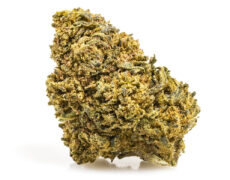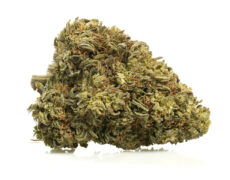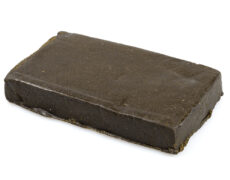Modified on: 15/04/2024
In the following article, we will delve into the definition and origin of one of the most versatile and controversial plants in human history: Cannabis Sativa
Definition: Native to Asia Minor, Cannabis (Linnaeus, 1753), indicated in Sanskrit by the terms bhanga, Vijaya and ganjika, in Hindi ganja, is a plant belonging to the genus Angiospermae and the family Cannabaceae, represented by plants with erect stems and fruits containing a single seed. Cannabis and hops (Humulus) are the only economically important species in this family.
In 1753, Charles Linnaeus (1707-1778) established the existence of a single species, Cannabis sativa, which is typical of hot and humid areas such as Thailand, Cambodia, and Central America and is characterized by its predominantly vertical growth and rapid vegetative growth.
The Swedish researcher chose this name because it described the plant’s physical characteristics; the word ‘cannabis’ means ‘cane-like, while the word ‘sativa’ means ‘useful’.
This plant has many uses. Besides, in ancient times it was mainly used for making ropes and sails, in the form of oil and cattle feed. Even today, hemp is still cultivated for the production of excellent textile fibers, in bio-construction or as a simple ambience fragrance in the form of legal hash.


The hemp used to produce textile fibers
Later, in 1785, the French naturalist and evolutionary biologist Jeanne-Baptiste de Lamarck (1744-1829) observed other specimens from India, which differed in the width of their leaves, a less pronounced height development and a much higher psychoactive profile.
The scientist decided to call this new species Cannabis Indica (Lamark, 1785), where ‘India stands for ‘Indian’.
Finally, a third species of cannabis was identified, named by botanists as C. ruderalis — from ‘ruderal’ meaning ‘growing in the waste’ — and classified as a weed that had escaped human domestication.
However, C. ruderalis is often associated with hemp (a type of cannabis hybridized to reduce THC levels), even though C. ruderalis has very low THC levels — they are always higher than those of hemp, and its sole purpose is hybridization.
Nowadays, the tendency is to unify the forms under a single species, Cannabis sativa, considering and giving weight to the fact that all Cannabis plants can fertilize each other and produce fertile offspring. Therefore, the conclusion was reached to identify C. indica and C. ruderalis as two subspecies or two different varieties of C. Sativa.
Read also: Are trichomes not maturing? How to identify the causes and what to do
The geographical origins of cannabis
The geographical origins of cannabis have also been much debated; documents show that people attempted to pinpoint the plant’s birthplace as early as the Middle Ages, hypothesizing India and China.


Today, there is reasonable certainty about Cannabis’ Central Asian origin, but this is not enough for researchers who are constantly working to unravel the mystery of the birthplace of one of the most versatile and controversial plants known to man (that starts to become legal in more countries, known under the name of CBD cannabis).
The search is not without its difficulties since there are no fossil prints (i.e., impressions of leaves on other objects) in historical documents, despite the popularity of cannabis in scientific and academic research.
To circumvent the obstacle, fossil pollen from the Cannabaceae was turned to study the plant’s long history.
Using a statistical technique involving ecological approximations to differentiate pollen from other common plants reasonably, it was found that the northeastern Tibetan plateau, specifically the area around Lake Qinghai, is the center of origin of cannabis.
It is believed that the plant then spread westwards, reaching Europe and Russia, and eastwards, landing in China, finding the steppe an ideal habitat.
It did not take long for humans to realize the plant’s usefulness, which provides an excellent textile fiber, and it began to be cultivated and marketed.
Chinese culture was more interested in its curative potential, using it in drink and smoke. In contrast, the cultivation of cannabis for textile use has a long tradition in Europe, and Italy for example, primarily linked to the expansion of the Maritime Republics, which used it extensively for ropes and sails.
And now…
Now that everything is clear, you can take a trip to our JustBob online shop and have a look at the products we sell, such as CBD cannabis, legal hash and CBD oil. We are waiting for you.









